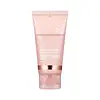What's inside
What's inside
 Key Ingredients
Key Ingredients

 Benefits
Benefits

 Concerns
Concerns

No concerns
 Ingredients Side-by-side
Ingredients Side-by-side

Water
Skin ConditioningPolyvinyl Alcohol
Glycerin
HumectantAgave Americana Stem Extract
Skin ConditioningSodium Hyaluronate
Humectant1,2-Hexanediol
Skin ConditioningCaprylyl Glycol
EmollientPolyglyceryl-10 Laurate
Skin ConditioningChlorella Vulgaris Extract
Skin ConditioningGlucose
HumectantButylene Glycol
HumectantEthylhexylglycerin
Skin ConditioningFructooligosaccharides
HumectantFructose
HumectantXanthan Gum
EmulsifyingCynanchum Atratum Extract
Skin ConditioningCaprylic/Capric Triglyceride
MaskingHydrogenated Lecithin
EmulsifyingAlthaea Rosea Flower Extract
Skin ConditioningCeramide NP
Skin ConditioningTocopherol
AntioxidantPancratium Maritimum Extract
BleachingCollagen Extract
Skin ConditioningSodium Stearoyl Glutamate
CleansingWater, Polyvinyl Alcohol, Glycerin, Agave Americana Stem Extract, Sodium Hyaluronate, 1,2-Hexanediol, Caprylyl Glycol, Polyglyceryl-10 Laurate, Chlorella Vulgaris Extract, Glucose, Butylene Glycol, Ethylhexylglycerin, Fructooligosaccharides, Fructose, Xanthan Gum, Cynanchum Atratum Extract, Caprylic/Capric Triglyceride, Hydrogenated Lecithin, Althaea Rosea Flower Extract, Ceramide NP, Tocopherol, Pancratium Maritimum Extract, Collagen Extract, Sodium Stearoyl Glutamate
Polyvinyl Alcohol
Glycerin
HumectantButylene Glycol
HumectantNiacinamide
Smoothing1,2-Hexanediol
Skin ConditioningSodium Hyaluronate
HumectantIsopentyldiol
HumectantCurcuma Longa Root Extract
MaskingPolyglyceryl-10 Laurate
Skin ConditioningPropanediol
SolventGlyceryl Glucoside
HumectantEthylhexylglycerin
Skin ConditioningXanthan Gum
EmulsifyingAdenosine
Skin ConditioningDisodium EDTA
Glucose
HumectantKojic Acid
AntioxidantAscorbic Acid
AntioxidantGlycine Soja Oil
EmollientCollagen Extract
Skin ConditioningRetinol
Skin ConditioningPolyvinyl Alcohol, Glycerin, Butylene Glycol, Niacinamide, 1,2-Hexanediol, Sodium Hyaluronate, Isopentyldiol, Curcuma Longa Root Extract, Polyglyceryl-10 Laurate, Propanediol, Glyceryl Glucoside, Ethylhexylglycerin, Xanthan Gum, Adenosine, Disodium EDTA, Glucose, Kojic Acid, Ascorbic Acid, Glycine Soja Oil, Collagen Extract, Retinol
 Reviews
Reviews

Ingredients Explained
These ingredients are found in both products.
Ingredients higher up in an ingredient list are typically present in a larger amount.
1,2-Hexanediol is a synthetic liquid and another multi-functional powerhouse.
It is a:
- Humectant, drawing moisture into the skin
- Emollient, helping to soften skin
- Solvent, dispersing and stabilizing formulas
- Preservative booster, enhancing the antimicrobial activity of other preservatives
Butylene Glycol (or BG) is used within cosmetic products for a few different reasons:
Overall, Butylene Glycol is a safe and well-rounded ingredient that works well with other ingredients.
Though this ingredient works well with most skin types, some people with sensitive skin may experience a reaction such as allergic rashes, closed comedones, or itchiness.
Learn more about Butylene GlycolCollagen extract is derived from parts of animals. It has skin conditioning properties and is mostly comprised of glycine, proline, and hydroxypoline. These are amino acids.
While our skin does have collagen, this ingredient is not used by the skin for anti-aging. Applying collagen topically has not been linked to helping with collagen loss in skin. All the benefits of collagen are related to hydration.
This ingredient will not increase sun sensitivity, but you should always wear sunscreen during the day.
Learn more about Collagen ExtractEthylhexylglycerin (we can't pronounce this either) is commonly used as a preservative and skin softener. It is derived from glyceryl.
You might see Ethylhexylglycerin often paired with other preservatives such as phenoxyethanol. Ethylhexylglycerin has been found to increase the effectiveness of these other preservatives.
Glucose is a simple sugar and is the most important source of energy in all organisms.
In skincare, glucose is used to hydrate the skin. It also acts as a prebiotic for our natural biome.
Glucose is hydrating due to its humectant property. As a humectant, glucose draws moisture from the air and from deeper levels in the skin.
Our skin contains many sugars that act as prebiotics and help strengthen our natural microbiome. Having a healthy microbiome helps protect our skin from harmful bacteria and other contaminants.
Studies show glucose may help with fading discoloration and pigmentation. This is because our skin metabolizes glucose into lactic acid. Lactic acid is an AHA that helps exfoliate the top layer of skin.
Learn more about GlucoseGlycerin is already naturally found in your skin. It helps moisturize and protect your skin.
A study from 2016 found glycerin to be more effective as a humectant than AHAs and hyaluronic acid.
As a humectant, it helps the skin stay hydrated by pulling moisture to your skin. The low molecular weight of glycerin allows it to pull moisture into the deeper layers of your skin.
Hydrated skin improves your skin barrier; Your skin barrier helps protect against irritants and bacteria.
Glycerin has also been found to have antimicrobial and antiviral properties. Due to these properties, glycerin is often used in wound and burn treatments.
In cosmetics, glycerin is usually derived from plants such as soybean or palm. However, it can also be sourced from animals, such as tallow or animal fat.
This ingredient is organic, colorless, odorless, and non-toxic.
Glycerin is the name for this ingredient in American English. British English uses Glycerol/Glycerine.
Learn more about GlycerinPolyglyceryl-10 Laurate is an ester of lauric acid and Polyglycerin-10.
Polyglyceryl-10 Laurate is a cleansing agent and emulsifier. It helps gather dirt, oil, and other pollutants to be rinsed away. As an emulsifier, it helps prevent ingredients from separating, such as oil and water.
Polyglyceryl-10 Laurate may not be fungal acne safe.
Learn more about Polyglyceryl-10 LaurateWe don't have a description for Polyvinyl Alcohol yet.
Sodium Hyaluronate is hyaluronic acid's salt form. It is commonly derived from the sodium salt of hyaluronic acid.
Like hyaluronic acid, it is great at holding water and acts as a humectant. This makes it a great skin hydrating ingredient.
Sodium Hyaluronate is naturally occurring in our bodies and is mostly found in eye fluid and joints.
These are some other common types of Hyaluronic Acid:
Learn more about Sodium HyaluronateXanthan gum is used as a stabilizer and thickener within cosmetic products. It helps give products a sticky, thick feeling - preventing them from being too runny.
On the technical side of things, xanthan gum is a polysaccharide - a combination consisting of multiple sugar molecules bonded together.
Xanthan gum is a pretty common and great ingredient. It is a natural, non-toxic, non-irritating ingredient that is also commonly used in food products.
Learn more about Xanthan Gum